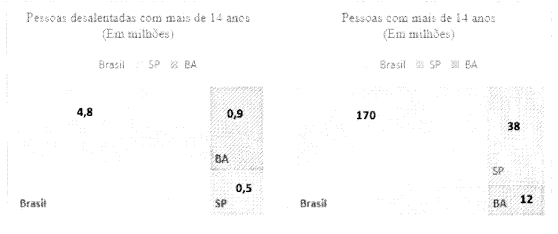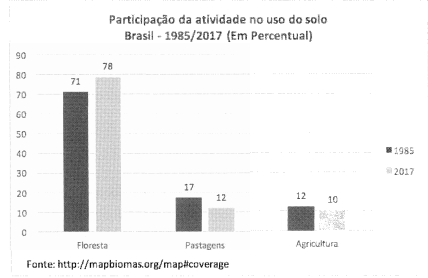Questões de Vestibular CÁSPER LÍBERO 2018 para Vestibular
Foram encontradas 50 questões
Tell Us What to Call the Generation After Millennials {Please)
Millennials are getting older. Not that much older, of course. We're a roughly defined generational cohort, but arguably the oldest members of our demographic set are just beginning to reach the age of 40.
Meanwhile, the American generation behind millennials has started to move intothe workplace. And while some have proposed names for this group born in 1995 and after — Generation Z, PostMillennials, The Homeland Generation, iGeneration — all of these names are bad. The first two don't even strive for originality! Come on. Then again, it's hard to know what makes a generational name stick.
"Millennial" was coined in the late 1980s by the consultants Neil Howe and William Strauss, both baby boomers, before the term Generation X was even popularized. (They wanted to call them "13th Gen," but that didn't stick, and neither did "slackers."
But their term "millennial" did not become the dominant name for the huge generation after those two until much later. "In retrospect, it's easy to see that names that people gravitate to say something," Mr. Howe said in a recent interview. "Either the name itself or the way in which it was adapted."
But Malcolm Harris, the millennial author of "Kids These Days: Human Capital and the Making of Millennials," argues that those most interested in naming generations are those trying to sell things to that cohort.
"Generations are really only understood in retrospect," Mr. Harris said. "Some people have a financial interest in naming them as soon as possible, people trying to sell stuff. That's the first perspective we get on any cohort, and I don't think it's necessarily a very good one."
One stumbling block is a lack of agreement about the birth years for each generation. People on the fringes can feel as if they've got almost nothing in common with the rest of the group. A few years' difference can determine if you could have been drafted for Vietnam, watched the first MTV videos, or were born into a world of instant messaging.
In 2015, the Census Bureau said that there were 83.1 million American millennials (born between 1982 and 2000), exceeding the 75.4 million baby boomers (between 1946 and 1964), and the 65 million that Pew Research said belong in Generation X (between 1965 and 1980). But the generation after millennials is still so ill-defined (probably because of the whole name issue) that an accurate count has not yet been established.
And a good name? Nope.
Fonte: New York Times. Publicado em 23/01/2018. Disponível em: https://www.nytimes.
com/2018/01/23/style/generation-names.html
Tell Us What to Call the Generation After Millennials {Please)
Millennials are getting older. Not that much older, of course. We're a roughly defined generational cohort, but arguably the oldest members of our demographic set are just beginning to reach the age of 40.
Meanwhile, the American generation behind millennials has started to move intothe workplace. And while some have proposed names for this group born in 1995 and after — Generation Z, PostMillennials, The Homeland Generation, iGeneration — all of these names are bad. The first two don't even strive for originality! Come on. Then again, it's hard to know what makes a generational name stick.
"Millennial" was coined in the late 1980s by the consultants Neil Howe and William Strauss, both baby boomers, before the term Generation X was even popularized. (They wanted to call them "13th Gen," but that didn't stick, and neither did "slackers."
But their term "millennial" did not become the dominant name for the huge generation after those two until much later. "In retrospect, it's easy to see that names that people gravitate to say something," Mr. Howe said in a recent interview. "Either the name itself or the way in which it was adapted."
But Malcolm Harris, the millennial author of "Kids These Days: Human Capital and the Making of Millennials," argues that those most interested in naming generations are those trying to sell things to that cohort.
"Generations are really only understood in retrospect," Mr. Harris said. "Some people have a financial interest in naming them as soon as possible, people trying to sell stuff. That's the first perspective we get on any cohort, and I don't think it's necessarily a very good one."
One stumbling block is a lack of agreement about the birth years for each generation. People on the fringes can feel as if they've got almost nothing in common with the rest of the group. A few years' difference can determine if you could have been drafted for Vietnam, watched the first MTV videos, or were born into a world of instant messaging.
In 2015, the Census Bureau said that there were 83.1 million American millennials (born between 1982 and 2000), exceeding the 75.4 million baby boomers (between 1946 and 1964), and the 65 million that Pew Research said belong in Generation X (between 1965 and 1980). But the generation after millennials is still so ill-defined (probably because of the whole name issue) that an accurate count has not yet been established.
And a good name? Nope.
Fonte: New York Times. Publicado em 23/01/2018. Disponível em: https://www.nytimes.
com/2018/01/23/style/generation-names.html
Tell Us What to Call the Generation After Millennials {Please)
Millennials are getting older. Not that much older, of course. We're a roughly defined generational cohort, but arguably the oldest members of our demographic set are just beginning to reach the age of 40.
Meanwhile, the American generation behind millennials has started to move intothe workplace. And while some have proposed names for this group born in 1995 and after — Generation Z, PostMillennials, The Homeland Generation, iGeneration — all of these names are bad. The first two don't even strive for originality! Come on. Then again, it's hard to know what makes a generational name stick.
"Millennial" was coined in the late 1980s by the consultants Neil Howe and William Strauss, both baby boomers, before the term Generation X was even popularized. (They wanted to call them "13th Gen," but that didn't stick, and neither did "slackers."
But their term "millennial" did not become the dominant name for the huge generation after those two until much later. "In retrospect, it's easy to see that names that people gravitate to say something," Mr. Howe said in a recent interview. "Either the name itself or the way in which it was adapted."
But Malcolm Harris, the millennial author of "Kids These Days: Human Capital and the Making of Millennials," argues that those most interested in naming generations are those trying to sell things to that cohort.
"Generations are really only understood in retrospect," Mr. Harris said. "Some people have a financial interest in naming them as soon as possible, people trying to sell stuff. That's the first perspective we get on any cohort, and I don't think it's necessarily a very good one."
One stumbling block is a lack of agreement about the birth years for each generation. People on the fringes can feel as if they've got almost nothing in common with the rest of the group. A few years' difference can determine if you could have been drafted for Vietnam, watched the first MTV videos, or were born into a world of instant messaging.
In 2015, the Census Bureau said that there were 83.1 million American millennials (born between 1982 and 2000), exceeding the 75.4 million baby boomers (between 1946 and 1964), and the 65 million that Pew Research said belong in Generation X (between 1965 and 1980). But the generation after millennials is still so ill-defined (probably because of the whole name issue) that an accurate count has not yet been established.
And a good name? Nope.
Fonte: New York Times. Publicado em 23/01/2018. Disponível em: https://www.nytimes.
com/2018/01/23/style/generation-names.html
Tell Us What to Call the Generation After Millennials {Please)
Millennials are getting older. Not that much older, of course. We're a roughly defined generational cohort, but arguably the oldest members of our demographic set are just beginning to reach the age of 40.
Meanwhile, the American generation behind millennials has started to move intothe workplace. And while some have proposed names for this group born in 1995 and after — Generation Z, PostMillennials, The Homeland Generation, iGeneration — all of these names are bad. The first two don't even strive for originality! Come on. Then again, it's hard to know what makes a generational name stick.
"Millennial" was coined in the late 1980s by the consultants Neil Howe and William Strauss, both baby boomers, before the term Generation X was even popularized. (They wanted to call them "13th Gen," but that didn't stick, and neither did "slackers."
But their term "millennial" did not become the dominant name for the huge generation after those two until much later. "In retrospect, it's easy to see that names that people gravitate to say something," Mr. Howe said in a recent interview. "Either the name itself or the way in which it was adapted."
But Malcolm Harris, the millennial author of "Kids These Days: Human Capital and the Making of Millennials," argues that those most interested in naming generations are those trying to sell things to that cohort.
"Generations are really only understood in retrospect," Mr. Harris said. "Some people have a financial interest in naming them as soon as possible, people trying to sell stuff. That's the first perspective we get on any cohort, and I don't think it's necessarily a very good one."
One stumbling block is a lack of agreement about the birth years for each generation. People on the fringes can feel as if they've got almost nothing in common with the rest of the group. A few years' difference can determine if you could have been drafted for Vietnam, watched the first MTV videos, or were born into a world of instant messaging.
In 2015, the Census Bureau said that there were 83.1 million American millennials (born between 1982 and 2000), exceeding the 75.4 million baby boomers (between 1946 and 1964), and the 65 million that Pew Research said belong in Generation X (between 1965 and 1980). But the generation after millennials is still so ill-defined (probably because of the whole name issue) that an accurate count has not yet been established.
And a good name? Nope.
Fonte: New York Times. Publicado em 23/01/2018. Disponível em: https://www.nytimes.
com/2018/01/23/style/generation-names.html
Exam ine the follow ing cartoon to answ er question.

Sobre o cartoon, qual das afirmações a seguir é FALSA?

O Instituto Brasileiro de Geografia e Estatística (IBGE) passou a divulgar nas estatísticas
sobre o mercado de trabalho uma nova informação: o número de desalentados. Esse grupo
corresponde a pessoas que desistiram de procurar emprego, mas gostariam de trabalhar.
Bahia e São Paulo são os estados com o maior número de pessoas nessa condição. De acordo
com a representação gráfica, é correto afirmar que:
Recentes pesquisas apontaram o processo de envelhecimento da população brasileira» Observe na tabela a seguir os dados referentes à quantidade de idosos por Região Geográfica do Brasil no ano de 2017.

De acordo com as informações disponibilizadas, é correto afirmar que:
O texto a seguir refere-se ao crescimento da taxa de feminicídios no Brasil:
"Segundo o Organização Mundial da Saúde (OMS), o número de assassinatos chega a 4,8 para cada 100 mil mulheres. O Mapa da Violência de 2015 aponta que, entre 1980 e 2013, 106.093 pessoas morreram por sua condição de ser mulher As mulheres negras são ainda mais violentadas. Apenas entre 2003 e 2013, houve aumento de 54% no registro de mortes, passando de 1.864 para 2.875 nesse período. Muitas vezes, são os próprios familiares (50,3%) ou parceiros/ex-parceiros (33,2%) os que cometem os assassinatos.”
Fonte: Revista Exame, 27/08/2017
De acordo com a notícia, é correto afirmar que:
O gráfico a seguir apresenta aspectos da utilização do solo no Brasil entre 1985 e 2017. A partir das informações disponibilizadas, é correto afirmar que:
